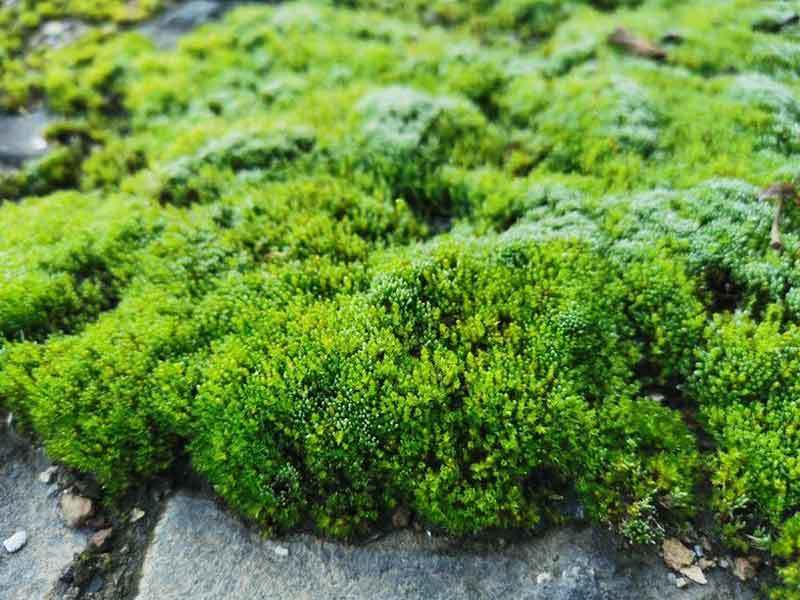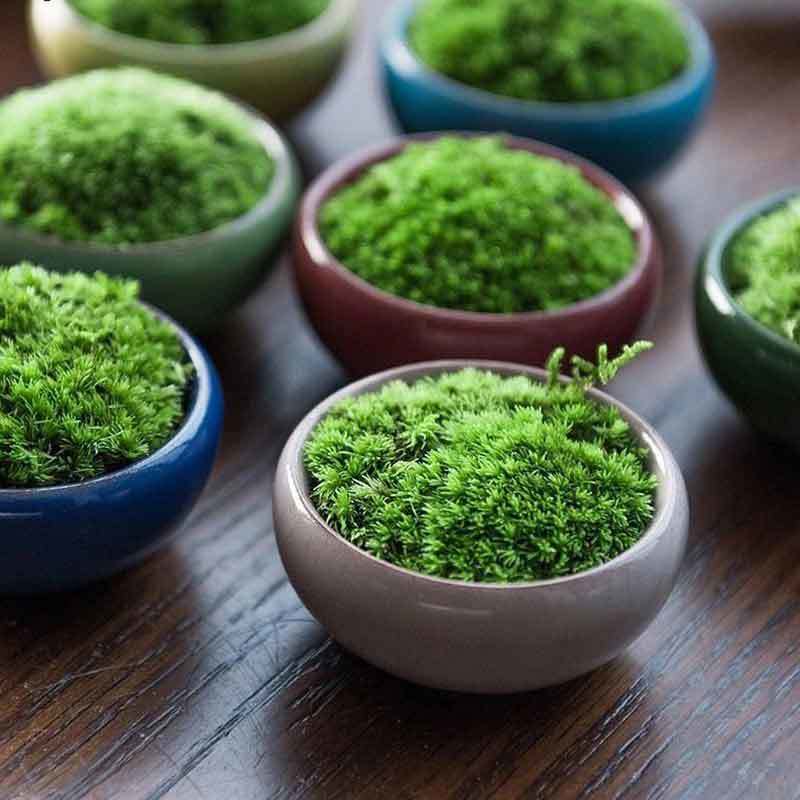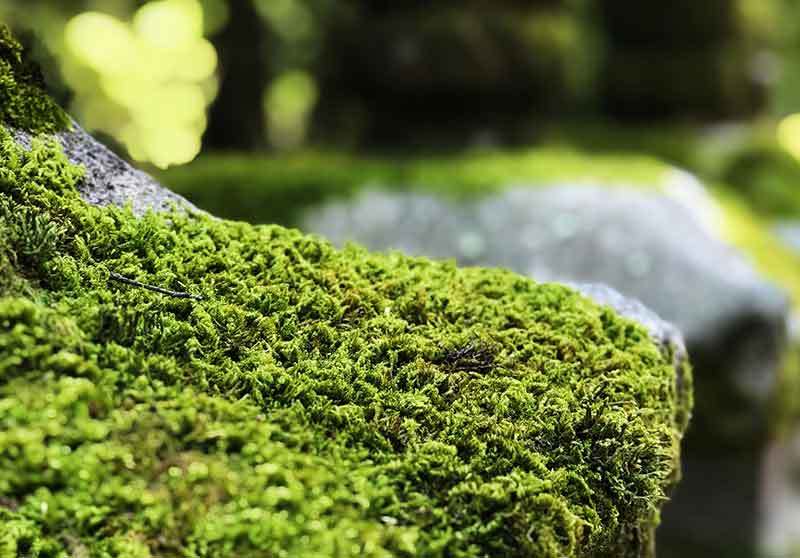Does Moss Need Water And How to Water Moss - Wilson Garden
Introduction
Moss does need water for growth and survival. It is incredibly resilient and can adapt to various environmental conditions. It has evolved many specialized adaptations for moisture management, enabling it to thrive in a range of habitats from damp forests to arid deserts.
Moss is a type of non-vascular plant. It utilizes a specialized form of metabolism known as “osmotic uptake” for its water needs. This process enables it to absorb moisture from the atmosphere or substrate. It can hold onto water within its cells until enough water has been collected to enable photosynthesis or reproduction.
Understanding Moss
Definition and characteristics: Mosses are small, non-vascular plants that are typically found in moist environments. They lack leaves but instead have thin stems with scale-like structures. That contain their chlorophyll for photosynthesis. Mosses have different colors, from bright green to rusty brown and grayish black.
Moss varieties and habitats: Bryophyta and Sphagnopsida are two main mosses. True mosses include all moss species, such as spanish moss, irish moss etc. Peat mosses are found in peat bogs and other wet areas.
True mosses are often found growing in moist, shady environments near the ground or on tree trunks and rocks. Peat moss prefer consistently wetter conditions such as bogs and marshes.
Importance of moss in the ecosystem: Moss is an important part of many ecosystems. It helps to hold moisture in soil, reduce runoff and filter pollutants from water. It also improves soil fertility and provides food for wildlife. It also stabilizes soils by trapping sediment particles. These particles can form a protective layer around roots and prevent erosion.
In addition, mosses trap carbon dioxide from the atmosphere. This helps to reduce global warming. As primary producers at the base of most terrestrial food webs, they provide essential energy and nutrients for the organisms that live in their habitats.

Moss Life Cycle
The life cycle stages: Mosses have a complex life cycle that involves four distinct stages. The first stage is spore germination, which occurs when spores in the environment absorb moisture and begin to grow. During this time, they form a single cell known as a protonema.
If conditions are favorable, the protonema will then produce gametes. The stems we can see above ground. Some species of moss may also form rhizoids at this stage, which help anchor them to surfaces such as soil or rocks.
The second stage is growth and development. The gametophores produce leaves and reproductive structures during this stage, like capsules and sporangia (which contain spores). After the spores are released from the sporangia into the air, the moss begins to form a turf or mat of stems and leaves.
This stage is often associated with optimal moisture levels. If the environment is too wet or dry, growth may cease until conditions become more favorable again.
The third stage is reproduction. Fertilization takes place when male (antheridial) cells join female (archegonial) cells and produce zygotes. It eventually grew into new gametophytes.
In some species, fertilization occurs when motile sperm from one moss plant swims through water toward another moss plant. However, other species do not require water for fertilization to occur. Instead, they rely on anemophily (wind-driven transfer of pollen).
Finally, the fourth stage is spore dispersal. When the sporangia reach maturity, they release spores into the air or water. So a new generation can begin. This process is essential for ensuring that mosses can survive in different types of habitats and climates over time.
Factors influencing moss growth and development: Mosses require certain conditions to thrive. These include moisture, light, temperature, pH level and nutrient availability. Without enough moisture—a primary factor for promoting growth and reproduction—moss may be unable to complete its life cycle stages.
Mosses are sensitive to changes in drought or extreme temperatures. They may die off if these conditions persist for too long. Additionally, mosses require light to photosynthesize and create energy. However, too much direct sunlight can dry out or damage the plants.
The Role of Water for Moss
Do you have to water moss? Water is an essential element for moss survival. Mosses need water to carry out photosynthesis and nutrient absorption.
Moss survival: Mosses need water to stay alive, just like any other organism does. Adequate water helps moss cells interact with one another. This also aids in keeping their tissues lubricated. So that they can grow without damage or obstruction.
Without enough moisture, mosses will dehydrate quickly. This can lead to cell death and eventual extinction. Therefore, moss should obtain sufficient water for survival.
Moss cells and tissues: Water is essential for the maintenance of moss cell membranes. Because it enables them to stay hydrated and facilitates communication between cells. Adequate amounts also help prevent desiccation. Water helps moss cells absorb nutrients from the soil. Because they are unable to do so on their own without a liquid medium present.
Moss photosynthesis and nutrient absorption: Moisture is important for the absorption of nutrients and photosynthesis. Without enough water available to them, mosses can't produce the necessary energy they need from light and carbon dioxide in order to survive.
Furthermore, lack of moisture can lead to a decrease in effectiveness when nutrient uptake as well. Because cells can't absorb the minerals they require from their environment without an adequate amount of liquid present.
Moss growth rate: Water availability has a significant effect on the growth rate of mosses. Without sufficient amounts present, mosses will experience slower rates of growth and may even become dormant if not given proper care. Adequate levels of moisture will allow mosses to thrive.
Adaptations of Moss to Water Conditions
Water retention mechanisms: Mosses are among the world’s oldest plants. They’ve adapted to a broad range of environments over millions of years. Mosses require some amount of water to survive. They have mechanisms for conserving moisture. Mosses can thrive in aquatic habitats with high levels of humidity and terrestrial habitats with low moisture levels.
Mosses in different water environments: How does moss get water? In terrestrial environments, mosses have evolved tissues and structures that help bind water molecules to their cells. These water-binding mechanisms allow the plant to survive periods of drought by storing moisture within its cell walls and tissues.
In aquatic habitats, mosses typically rely on their membranous leaves to absorb and retain moisture. The layer of cuticle that covers the leaves helps protect against dehydration while also allowing for maximum absorption of moisture when it is available. This allows mosses to flourish in wetland environments such as lakeshores or marshlands where higher humidity levels enable them to thrive.
Additionally, mosses have a strategy for surviving in habitats with low humidity. They can grow in mats that form an insulating layer over the soil surface. This creates a humid microclimate around the moss which helps keep it hydrated even during long dry spells.
Epiphytic mosses are found growing on tree trunks or branches. They absorb moisture from fog and rain, as well as decomposing organic material such as leaves or wood. Epiphytic mosses also make use of their external rhizoids. These are root-like structures that help the plant cling to its host and absorb moisture from the air.
Moss morphology and physiology: The availability of water is also an important factor in shaping moss morphology and physiology. For example, mosses in aquatic environments are larger and broader than those found on land. Because of the increased availability of moisture. Conversely, terrestrial mosses can survive long periods of drought by using their water-binding mechanisms to conserve moisture within their cells.

How to Water Moss?
The success of any moss-growing venture depends largely on properly watering the plants. Gardeners must consider several factors before wetting their moss, such as the species, location and climate. You should know the type of moss, the area and the local environment. You can keep your moss looking lush and healthy for years with proper care and attention.
Factors to consider before watering moss You need to assess its conditions first before attempting to water any kind of moss. Different types of mosses have different levels of tolerance for moisture levels. So examine each one carefully to determine the best way to water them.
Additionally, the location of your moss plants and the climate surrounding them also decide how much water they need. For example, mosses in dry climates will usually require more frequent watering than those grown in moist environments.
Best practices for watering moss in various settings: For gardens and terrariums, you should provide consistent levels of moisture by regularly misting or spraying the moss with a gentle shower. This helps ensure that the proper amount of hydration is being provided without risking overwatering or underwatering your plants.
To keep vertical walls looking full and lush, use a hose fitted with a nozzle set on low pressure to lightly spray the moss. This will help evenly distribute water across the surface without risking erosion or oversaturating certain sections.
Overwatering vs. underwatering: It can be tricky to find the right balance between overwatering and underwatering moss plants. Because both can lead to unhealthy plants. When left in standing water for too long, mosses become overly saturated and prone to diseases and rot.
They may become dry and brittle if you do not give them enough hydration. This can stunt their growth or even cause them to wither away entirely. You need to feel the soil around them. Make sure it’s damp but not too soggy.
Tips for maintaining moisture levels in moss habitats: You can use a number of methods to keep the ideal moisture levels in your moss habitats. For example, adding mulch or compost. This will help retain water and reduce evaporation over time.
You can also cover larger areas with shade cloth or plastic sheeting. This will keep them from becoming overly dry during hot, sunny days. Additionally, check for drainage issues caused by blocked gutters or damaged pipes. This can cause excess water accumulation in certain areas.
Moss and Rainwater
Moss is a unique type of plant. It thrives in damp and shady areas. Rainwater provides the best source of hydration for moss. Because it is naturally pure and free from any chemical additives or minerals.
Benefits of rainwater for moss growth: Rainwater contains all the essential elements required for healthy growth. For example, nitrogen, phosphorus and potassium etc. This helps to promote healthy root development. Tap water often contains chlorine and other chemicals. Moss may need to deal with heavy metals or impurities in it.
Collection and usage of rainwater for watering moss: You can collect rainwater directly. Your moss will get all the nutrients it needs. You will capture some pure and uncontaminated moisture for your plants. You can use a rain barrel to collect and store rainwater. You should use it as soon as possible after collecting the rainwater.
Rainwater quality affects moss health: The contaminants present in the water can cause serious damage to delicate organisms. For example, lead, arsenic or mercury. The pH levels can also have an impact on the moss. So you should use pure and uncontaminated rainwater.
Other water sources for moss: You can use alternative water sources to sustain moss in a garden. Dew, fog and mist all contain trace amounts of water. The moss can absorb and use these for its growth. While these alternative sources are not as efficient at supplying moisture as direct watering is, they may still provide enough hydration for healthy moss growth in some cases.
When planning a moss garden, it is important to consider incorporating water features into the design. Water features such as ponds, fountains and cascades can help ensure that sufficient amounts of moisture are available for the moss in your garden.
How to Take Care of Moss?
Signs of dehydration and overhydration in moss: Most types of moss prefer moist and humid environments. Keep an eye on your moss and monitor how much water it’s receiving. You can adjust as needed. Signs of dehydration include dry patches or yellowing leaves, while overhydration can cause brown spots or rot.
Remedies for reviving dehydrated moss: If your moss seems dehydrated, don’t worry. You can revive it with the right treatments. Mist it lightly with water and cover it with plastic wrap for several hours. This can help your moss absorb some moisture and revitalize its growth. If that doesn’t work, you can also try soaking your moss in lukewarm water or adding a small amount of soil-based fertilizer.
Preventing diseases and pests: You should take preventive measures against diseases and pests. These may be caused by too much water in your moss garden. Keep any standing water away from your plants. Because moss in water can create an ideal environment for certain types of fungi and molds. This may damage them or cause disease. Additionally, try to keep your moss in an area that’s unshaded and well-ventilated. So it won’t get too wet.

Frequently Asked Questions
Do mosses need water to reproduce?
Mosses need water to reproduce, as they are non-vascular plants. These plants lack the specialized tissues that help move water and nutrients throughout the plant. So their reproductive cycle relies on a moist environment. To reproduce, mosses rely on spores or tiny gametophytes which develop into new plants when provided with a moist environment.
Without sufficient amounts of water, mosses can only spread through fragmentation or by being disturbed and moved from one place to another. This is why it’s important to maintain adequate soil moisture for mosses to thrive in your garden or lawn. Additionally, having healthy soil structure also helps ensure there's enough air in the soil so that moss can get the oxygen it needs to survive.
How much water does moss need?
Moss plants are generally hardy. They can thrive in both wet and dry environments. However, they prefer to be kept moist. Moss benefit from regular watering. Particularly during the warmer months of the year. The temperatures are high and soil moisture is low. Moss should receive around an inch or two of water per week to ensure optimal growth and health. This depends on the species of moss.
How often should I water my moss plants?
It's best to establish a reliable watering schedule with your moss plantings. So that you know exactly how much and how often they need to be watered for optimal health. You should water moss plants every two to three days during the warmer months. Every five to seven days during the cooler months.
What is the best way to water my moss?
The easiest and most efficient way to water your moss plants is by using a spray bottle or garden hose on a low pressure setting. This allows you to evenly distribute moisture throughout the moss without damaging it. Additionally, when watering your moss, take care not to overwater. Because this could cause root rot or other problems.
Does moss need sunlight?
While moss enjoys some sunlight, most species of moss prefer indirect light or bright shade as direct afternoon sun tends to cause scorching or fading in certain species. Additionally, providing adequate air circulation and keeping the area around your moss plants free from debris are also important factors for healthy growth and development.
Conclusion
Moss needs water to survive and thrive. But it is still able to tolerate drier conditions better than most plants. You should regularly mist the moss garden. Your mosses will stay healthy and vibrant. This also allows you to appreciate its captivating nature and its remarkable relationship with water. So don't wait any longer: explore the world of moss today!



